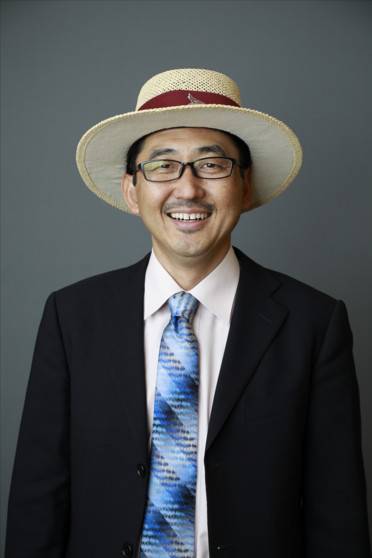Diatom research could prove an innovative key to improving efficiency of desalination
Jayme Blaschke | July 6, 2020

Keisuke Ikehata, an assistant professor in the Ingram School of Engineering at Texas State University, has received a $250,000 grant from the United States Bureau of Reclamation (USBR) for a pilot program to enhance water recovery from reverse osmosis-based (RO) desalination systems using photobiological technology.
Desalination is the process in which salt is removed from water to make it drinkable. Current RO systems can produce 75-85 gallons of drinkable water for every 100 gallons of saline water or treated wastewater processed. The pilot program will see Ikehata's technology installed at San Antonio Water System's H2Oaks Center desalination plant to prove the process can significantly increase RO efficiency while working continuously in realistic water treatment environments.
"This research is to develop a new photobiological treatment process for reverse osmosis brine, which is a byproduct of brackish groundwater desalination facilities like the ones in San Antonio and El Paso," Ikehata said. "Our goal is to develop new, environmentally-friendly green technology to treat this waste stream, so that we can do additional desalination."
Between 15 to 20% of water processed by RO technology emerges as a highly saline brine, and must be disposed of as a waste product, often at significant expense. More potable water cannot easily be extracted from the brine because the RO process also concentrates silica and calcium in the brine. Excesses of these dissolved minerals quickly foul RO membranes at high concentrations.
Ikehata's innovative solution was to introduce diatoms to the equation. Diatoms are single-celled plants that naturally extract silica from water to construct their cell walls.
"We can treat this waste stream with green technology using brackish water diatoms, which will allow us to squeeze more fresh water out of this salty water," Ikehata said. "There are other technologies out there that can do the same thing, but our technology can do it better and in a greener way. We use sunlight, which is free energy, instead of using chemicals and physical agents.
"It's natural for diatoms to eat silica and grow. There's no other microorganism that does that. This was my eureka moment back in 2012," he said. "We're hoping to revolutionize desalination and sustainable water resources practice by enhancing the recovery of fresh water."
The process would take the waste brine produced by RO desalination and direct it through a population of brackish water diatoms, which only need sunlight to thrive. The diatoms would extract the dissolved silica from the brine, which would then undergo a second round of RO desalination.
"Nobody has really cared about silica because it's such a benign chemical species. It's not toxic, but it's a headache for RO operations," Ikehata said. "But using our photobiological technology, we can actually squeeze more water out of the brine. We can achieve a higher recovery. We are not developing a desalination technology, we're developing a technology to enable very efficient desalination."
The pilot program will also study the secondary RO desalination to determine proper pre-treatment requirements. The project will include a lifecycle cost analysis to evaluate the economic feasibility of the proposed enhanced water recovery process.
The grant was awarded through the USBR's Desalination and Water Purification Research Program. For more information about the program, visit www.usbr.gov/newsroom/newsrelease/detail.cfm?RecordID=71383.
Share this article
For more information, contact University Communications:Jayme Blaschke, 512-245-2555 Sandy Pantlik, 512-245-2922 |